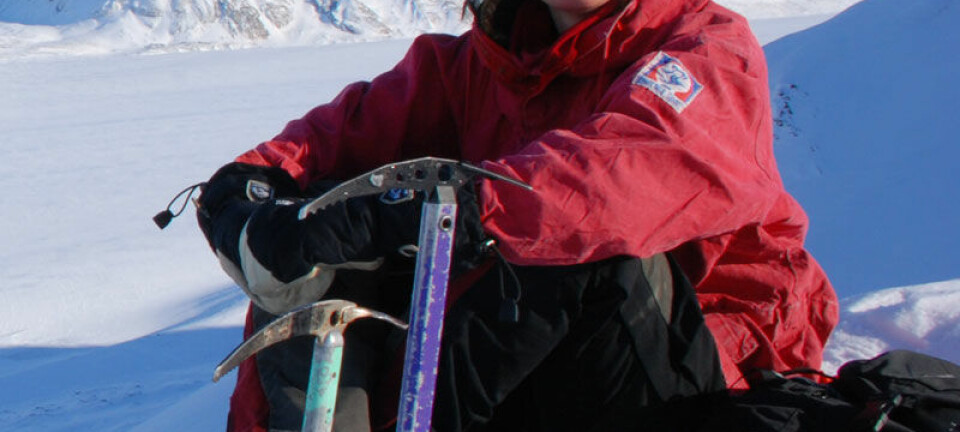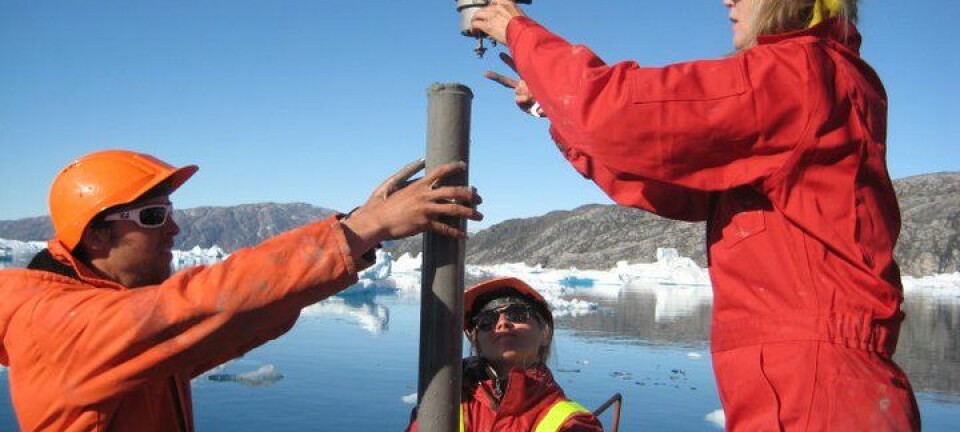
Banished scientist makes glacial discovery
Eiliv Larsen experienced a major career setback when he was expelled from Russia. Now he is back in the loop with a surprising discovery about Russian glaciers.
Denne artikkelen er over ti år gammel og kan inneholde utdatert informasjon.
Think of a glacier, and you'll likely think of a river of ice flowing down a mountainside. But a new analysis of data from the Archangelsk region of Northwest Russia presents a somewhat counterintuitive picture of glacial movements.
The study, by Eiliv Larsen from the Norwegian Geological Survey (NGU) and his Russian counterparts, showed that during the last Ice Age, glaciers that were essentially flat were able to move up slopes.
In an odd twist of fate, Larsen's big discovery happened only after he was accused of espionage in Russia in 2009 and expelled from the country where he had conducted research for much of his career.
The geologist has dismissed the charges from the Russian secret police as spurious but that still hasn’t kept him from being barred from his preferred research area.
However, the prohibition has given him more time to study earlier finds and these analyses are bearing fruit.
Quite a blow
Larsen spent more than 15 years building a wealth of knowledge about glaciation in Northwest Russia some 20,000 years ago, during the last Ice Age.
But in July 2009 Larsen and two Norwegian research colleagues were stopped at the airport in Murmansk by the FSB, the organisation that replaced the KGB. After going through all his equipment, they made a fuss about a single map among several he’d bought in a bookstore in Archangelsk. It lacked an official seal, so he was interrogated and accused of spionage.
“My entire scientific career was invested in projects in Russia, so it was a tough break,” says Larsen.
“We’ve had the data for this new study we are presenting for a long time. It took a while before I wanted to immerse myself in this material again,” he says.
He says that the interim gave him an opportunity to give the geological data more thought and reflection.
“One aspect of research these days is the demand for speedy publication. We risk something there, missing out on new knowledge. In this particular case it turned out to be fruitful that I was involuntarily stopped in my tracks and given time to mull over things,” says Larsen.
Grand scale geology
It was only after he returned to Norway and studied his figures on ancient glaciation and perused the overall lines on the map that he realised the motion of the glaciers had been very special.
“We’ve discovered that even in land areas that slope to the north, towards the Barents Sea, the glaciers moved to the south against the grade, and they were almost totally flat.”
These glaciers have not left big tracks in the landscape like most others, which act like enormous bulldozers ploughing off everything in their path.
“Instead, old sediments are still evident and this is one of the keys to understanding how the glaciers could move like they did,” says Larsen.
He explains that the glaciers were able surge up a slight slope because the sediments beneath them had little capacity to drain away water. The meltwater from the giant sheets of ice was essentially trapped.
So the liquid below was under high pressure, which made it able to support the ice. There was also minimal friction. Larsen compares it to hydroplaning, the experience you can have when driving on a wet highwa.
“By learning more about these glaciers from the last Ice Age, we increase our knowledge about the Earth’s climate system on a major scale. Glaciers are an important part of this system. They respond to climate changes and affect the climate as well. They tell us about developments, variations and changes in the climate of the past,” says Larsen.
Russian authorities tighten reins
In the novel "Dead Souls", author Nikolai Gogol wrote: “However stupid a fool’s words may be, they are sometimes enough to confound an intelligent man.”
Larsen has not been confounded by his Russian setback.
But how did he find the motivation to continue with his research?
“I had to reach inside a bit to find it, but scientific interest is a powerful fuel. I can’t do anything about the fact that the Russian authorities have a rather peculiar position regarding our studies.”
Russia has clamped down in recent years, enforcing more stringent regulations and exhibiting less transparency.
“Foreign researchers in the country feel this. Working conditions have deteriorated. The Russians have defined bigger expanses of their territory as sensitive areas,” says Larsen.
The NGU geologist says he spent time in several of these areas when doing fieldwork for his research.
“And I was on my way into one when I was stopped and declared persona non grata, even though I have always operated with the necessary permits from the FSB. Then this one time I was stopped,” he says.
Larsen doesn’t know whether he will ever return to Russia.
“It’s unclear whether I’ve been banned for five or for ten years. Another thing is that such a trip requires a half year of preparations. It’s a big job.”
“Even if I could get a visa sometime in the future, and all the papers and licenses for the research project were in order, I’d still run a chance of being halted again. I don’t know if I want to risk experiencing that again,” says Larsen.
--------------------------
Read the Norwegian version of this article at forskning.no
Translated by: Glenn Ostling
































